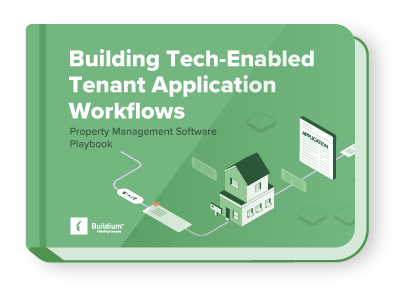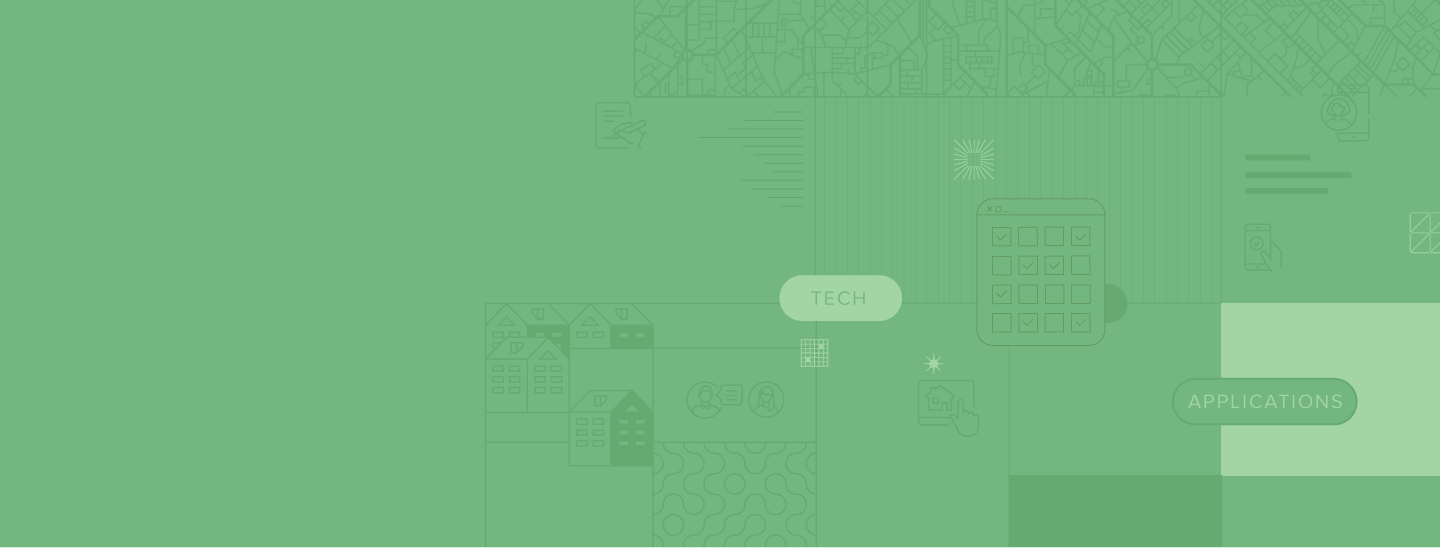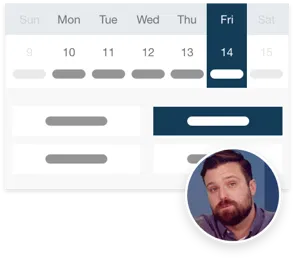For years, “digital” simply meant using spreadsheets instead of ledger books. But things have changed. Today’s property managers can build entire operations that are fully digital, from lease signings to vendor payments to team coordination.
Start your free trial today!
Try Buildium for free for 14 days. No credit card needed.
Start Your TrialIf you’re still juggling manual processes, emails, and paper folders, moving to a digital-first operation might feel like a big leap. But the truth is, it’s less about the tools and more about the mindset—and the long-term payoff is substantial.
In this article, we’re exploring what going digital really means, how it transforms your daily operations, and why it’s becoming the standard for property managers everywhere.
What Is Digital Property Management?
At its core, digital property management means handling all operational tasks through cloud-based systems, centralized digital workflows, and real-time data access.
When fully realized, it’s about creating a unified digital workspace where:
- Your entire team can work together from anywhere
- All data and documents live in the cloud
- Communication is centralized and searchable
- Daily tasks (inspections, renewals, payments) happen in digital workflows
- Reports and insights are always just a few clicks away
This doesn’t mean you have to give up personal service. In fact, going digital often gives you more time and energy to focus on what matters most: relationships, responsiveness, and strategic growth.
Why Go Digital? (Hint: It’s Not Just About “Efficiency”)
Sure, digital systems help speed things up—but that’s just the beginning. Let’s take a closer look at the deeper benefits that come from operating in a fully digital environment.
1. Work From Anywhere Without Losing Control
Digital tools untether you from the office. Whether you’re at a site visit, on vacation, or working from home, you can:
- Access leases, maintenance requests, and payment histories instantly
- Communicate with tenants and owners in real time
- Assign tasks or check in on team progress without needing a desk
This flexibility makes it easier to balance your schedule, cover for teammates, or even grow your business without expanding your overhead.
You’re also better prepared for the unexpected. If weather, illness, or travel keeps someone away, their work doesn’t stop—it’s right there in the system.
2. Unify Your Team Around Shared Processes
Digital systems create clarity. When everyone uses the same process, follows the same digital steps, and sees the same information, fewer things fall through the cracks.
For example:
- Maintenance requests are assigned and tracked in a shared queue.
- Leasing tasks (screenings, approvals, follow-ups) follow a standardized digital checklist.
- Notes, photos, and updates live in one timeline so anyone can step in and help.
Instead of relying on memory, sticky notes, or individual inboxes, teams work from the same digital playbook. That builds consistency and lowers stress.
3. Make Owner Communications Easier and More Transparent
Owners increasingly want more than results from their property management company. They also want visibility. When you operate digitally, it’s easier to:
- Share detailed reports with real-time data
- Keep documents organized and shareable
- Show a clear record of communications, maintenance, and finances
The difference is noticeable. Instead of asking for updates, owners feel informed and confident. And when it’s time for quarterly calls or year-end summaries, everything’s already organized.
Some property managers even introduce owner portals or dashboards to take transparency to the next level.
4. Keep Documents and Records in One Central Place
Every property manager knows the struggle of finding “that one lease,” “that vendor invoice from March,” or “that signed inspection checklist.” In a digital system, all of that lives in one place—and is searchable.
You don’t have to:
- Dig through file cabinets
- Sort through email chains
- Ask your team who last had the document
Leases, correspondence, work orders, receipts, insurance certificates—it’s all right there. That saves you time and reduces liability, especially during audits, disputes, or inspections.
5. Scale Without Getting Buried in Admin Work
Here’s a trap many property managers fall into: They grow their portfolio, but their systems stay manual. More units = more chaos.
Digital systems fix that. By automating repetitive work and organizing your workflows, you can grow without burning out.
You’ll spend less time on:
- Repetitive tenant communications (thanks to templates and scheduled messages)
- Manual rent tracking or invoice logging
- Following up with vendors one by one
- Checking calendars for renewal dates or inspections
That opens the door to manage more properties or spend more time on high-value work, such as owner acquisition or process improvement.
What a Fully Digital Day Looks Like
Let’s compare a traditional day to a digital-first one.
A Traditional Day (Manual)
- Start the morning sorting through emails, voicemails, and paper notes
- Call a plumber about a leak; leave a message; wait
- Check your Excel sheet to track which leases expire soon
- Print and file three lease agreements
- Drive to the office to access a file
- Spend 30 minutes updating spreadsheets for a weekly owner report
- Manually remind tenants about rent
A Digital Day
- Log into your dashboard from home with a coffee
- See all maintenance requests sorted by priority and status
- Message tenants and vendors through one system—no switching between apps
- Review lease renewals via digital checklist and send them for e-signature
- Upload property photos or inspection notes directly from your phone
- Share a performance report with an owner in two clicks
- End the day knowing everything’s saved, synced, and organized
The second day doesn’t just look easier—it also leaves room for strategy, improvement, and breathing space.
How to Start Going Digital (Without Overhauling Everything at Once)
Going digital doesn’t mean you have to flip a switch and change your entire system overnight. The most successful transitions happen in stages.
Here’s a smart path to follow:
1. Audit Your Current Workflows
List out your daily, weekly, and monthly tasks. Which ones feel disorganized, repetitive, or time-consuming? These are your best candidates for digitization.
Start small: Lease renewals, rent tracking, or maintenance logs.
2. Create Digital Templates
Don’t rewrite every message from scratch. Build templates for:
- Lease renewal notices
- Welcome messages
- Maintenance updates
- Owner reports
Digital templates keep communication fast, consistent, and professional.
3. Organize Your Cloud Storage
Set up a simple, structured folder system (e.g., by property, then by category like leases, inspections, correspondence). Start uploading key documents. Over time, you’ll build a searchable archive.
4. Standardize How You Log Tasks
Create digital checklists for move-ins, turnovers, inspections, etc. Even if your team is small, these systems make onboarding and delegation much easier later.
5. Schedule Recurring Digital Reminders
Use calendar tools to remind you about:
- Lease expiration dates
- Preventive maintenance
- Compliance deadlines
- Insurance renewals
You’ll never scramble at the last minute again.
Of course, putting this plan into motion requires having the right tools in place from the start. Take a look at property management software options such as Buildium that let you start small and scale up over time.
Overcoming the Common Objections to Going Digital
Switching to digital operations takes some effort. But there are some concerns that can be addressed even before getting started:
“I don’t have time to learn a whole new system.”
Start with one or two digital habits. You don’t need to learn everything at once—just enough to make your next week easier.
“I’ve always done things this way—it works.”
That might be true—but digital systems protect your time and make your operation more scalable, especially if you plan to grow or eventually sell.
“My tenants/vendors aren’t tech-savvy.”
Most people today can navigate basic portals or online forms. Still, offer a quick tutorial or alternate option (such as email) during the transition.
“Digital means more screens and less human interaction.”
Only if you let it. The goal is to reduce busywork so you can spend more time connecting with people—not less.
The Long-Term Payoff of Digital Property Management
Let’s look beyond the daily convenience.
A fully digital property management operation is easier to:
- Audit
- Sell or hand off
- Grow efficiently
- Keep compliant
- Troubleshoot or scale
It also gives you:
- Better visibility into your business
- More time to focus on strategy and service
- A competitive edge in a fast-moving industry
Imagine onboarding a new team member and having every process, file, and system already documented and available. Imagine showing an investor or prospective owner a dashboard of real-time performance stats. That’s the power of digital operations.
Software To Fully Embrace Digital Property Management
Property management has always been about people—residents, owners, vendors, and team members. That hasn’t changed. What’s changed is how we manage the moving pieces behind the scenes.
Going digital doesn’t erase your personality or experience. It frees up your time and sharpens your focus, so you can use your energy where it really counts.
If you’re tired of being buried in admin work, chasing files, or repeating the same tasks day after day, it’s time to give digital operations a serious look.
Buildium is a digital-first platform that’s built specifically to tackle your most time-consuming property management tasks. It brings together an impressive list of features and a whole ecosystem of partner technologies to manage your entire portfolio and every vendor, tenant, and owner relationship. You can give it a try with a free, 14-day trial or by signing up for a guided demo.
Buildium and similar digital tools make it easy for you to start small, making your business more efficient one workflow at a time. Before you know it, your operation will feel lighter, faster, and more resilient than ever.
Read more on Growth

